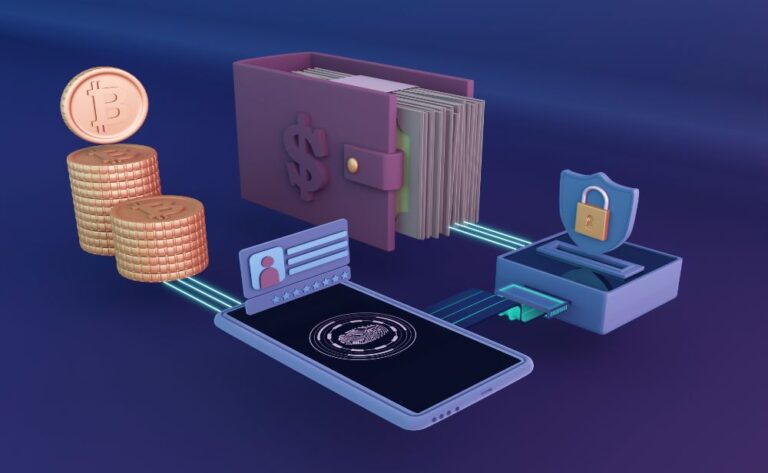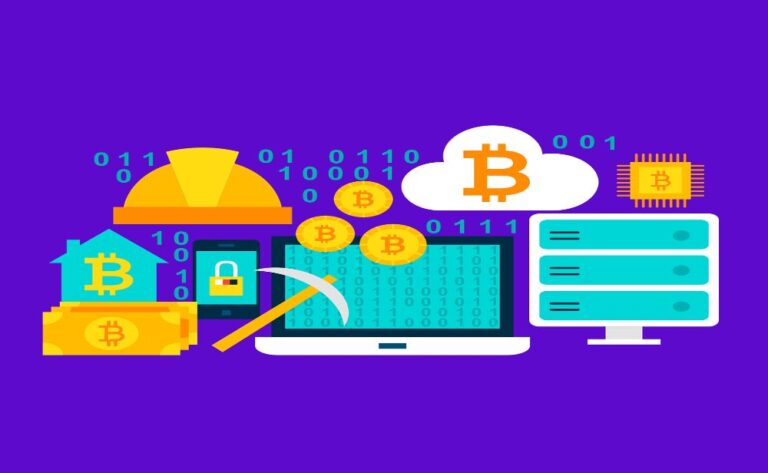Review of SoFi’s Automated Investing Platform

SoFi was established in San Francisco twelve years ago by four graduates of Stanford University’s business school with the intention of assisting young adults in managing their personal finances. At this time, SoFi Automated Investing is the only Robo-advisor that does not charge any fees and also provides free access to a Certified Financial Planner advisor for all of its members. 1 The portfolios are available in five different risk levels and include exchange-traded funds that are diversified and have low fees. Although the well-diversified portfolios include low-fee and free ETFs, SoFi Automated Investing does not offer all of the customization options that its rivals do.
Users of SoFi Automated Investing are referred to as members by the broker, and they are offered the chance to take part in social activities, receive exclusive discounts, and to receive free career counseling. SoFi recently reached a settlement with the SEC regarding allegations that the company transferred client funds from third-party exchange-traded funds (ETFs) into their own proprietary ETFs, resulting in unneeded tax consequences for customers. We’re going to look more closely at SoFi Automated Investing to determine whether or not it meets the requirements of your investment portfolio.
Key Takeaways
• Account management through SoFi Automated Investing is offered at no additional cost and includes access to a Certified Financial Planner.
• SoFi Automated Investing members have access to live customer service representatives by phone during the weekdays, and evening hours are also available for their convenience.
Users are able to sync their existing accounts with SoFi Relay, which provides them with deeper financial insights and personalized recommendations.
• Prospective users of the SoFi Automated Investing platform can view portfolio recommendations prior to signing up for the service because the platform is simple to navigate.
Pros
• Availability of Certified Financial Planners for each and every client
• No investment management fee
• It costs $1 to open an account, and $5 to get started making investments.
• Access to a vast array of SoFi lending options, cash management services, and opportunities for self-directed investing
• Capability to view portfolio prior to disclosing personally-identifying information
Cons
• There is to be no “tax loss harvesting”
• No socially responsible portfolios
• No portfolio customization
Creating an Account
With SoFi Automated Investing, creating an investment account is quick and easy. After entering your email address and choosing a password to access your account, you are prompted to answer four questions regarding your financial objectives and tolerance for risk. Your input is used to generate an initial portfolio for you that adheres to modern portfolio theory (MPT) and reflects one of five different risk levels, ranging from conservative to aggressive. These risk levels are based on the order in which you answered the questions. Each choice offers an assortment of exchange-traded funds (ETFs) ranging from four to nine different asset classes.
Before finishing the process of setting up your account with SoFi Automated Investing, you have the ability to view your recommended portfolio in addition to any of the other 10 portfolio options. This is a significant advantage of SoFi Automated Investing. This distinguishes SoFi Automated Investing from many of its rivals, many of which demand that you fully set up an account first, including providing your Social Security number, before they will let you view the model portfolios. The Automated Investing portfolios are comprised of five different risk levels, each of which offers a selection of taxable and retirement account portfolios. You can call for assistance during the weekdays, or you can chat online around the clock with the AI-powered virtual chat bot.
The straightforward creation of an investment account is the next step for those who are prepared to make an investment. You have the option of selecting an account type from a variety of options, such as individual taxable, joint taxable, traditional individual investment accounts (IRAs), Roth individual investment accounts (IRAs), simplified employee pensions (SEP), and rollover IRAs. 3 Personal information, such as one’s Social Security number, net worth, and investment background are collected during the account setup process as is customary. Because SoFi Automated Investing does not support trust or custodial accounts, you will need to look elsewhere if you are interested in opening either of those particular types of accounts.
After the initial setup of the account, all that is required of you is to link your bank account and then transfer the funds. Once there is a balance of $5 in your account, the account will be transferred over to the investment department. You can programme your platform to make automatic deposits at regular intervals, which will help your portfolio expand over time. Customers of Sofi Automated Investing have the option to schedule a thirty-minute meeting with a financial consultant to discuss any questions or concerns they may have regarding investments.
Strategy Formulation
The initial questionnaire for SoFi Automated Investing gives users the option to select one of three different goals: retirement, general investing, or a large purchase. The option for making a large purchase includes things like a house, an education, a wedding, and a vacation.
Your response is added to all of the other information you provided in the questionnaire, and it plays a role in determining the asset allocation recommendation. As was mentioned, a scheduled meeting with a financial advisor for thirty minutes gives you the opportunity to talk about your objectives as well as other aspects of financial planning. The SoFi Checking and Savings Vault is the only place besides the Automated Investing section where it is possible to monitor progress toward particular objectives. 4
In addition, there is a feature called SoFi Relay that allows you to link all of your financial accounts, including those that are held at institutions other than SoFi, and obtain a 360-degree view of your entire financial picture, which includes your investments, spending, and savings. In addition to this, Relay provides you with financial recommendations based on your overall financial picture. Having said that, the Automated Portfolio allocation of your SoFi account does not take into account the data from synced accounts when it makes recommendations for your portfolio.
Services for Accounts
SoFi Automated Investing makes it possible to set up automated deposits in an easy to manage manner. However, in order for users to access Cash Management features, they will be required to register for SoFi Checking and Savings.
It is also important to emphasize once more that all account holders have unrestricted access to complimentary phone consultations lasting thirty minutes with financial and career advisors. This account perk is uncommon among Robo-advisors, and it distinguishes SoFi in that it provides more comprehensive financial planning than it does merely managing an MPT-based portfolio. SoFi is a leader in the industry.
Users of SoFi Automated Investing also have access to the full suite of products and services offered by SoFi, which includes the following:
• Self-directed brokerage accounts for cryptocurrencies, initial public offerings (IPOs), stocks, and exchange-traded funds (ETFs) are available through SoFi Active Investing.
• Loans for education, buying a home, and paying off existing debt
• Services offered by banks, including credit and debit cards
The lack of margin trading, options trading, and other advanced investment opportunities is something that more experienced investors will notice about SoFi. Larger full-service brokerages such as Schwab or Fidelity may be a better fit for investors looking for a one-stop financial management firm with robo-advisors combined with comprehensive investment and financial services. If this describes what you’re looking for, read on. If, on the other hand, you don’t intend to engage in options trading or make use of leverage, the one-stop financial management firm that SoFi provides also provides a streamlined version of its services for investors whose preferences are more straightforward.
Management of Cash Flow
The product formerly known as SoFi Money has been rebranded as SoFi Checking and Savings. New members are not eligible to receive SoFi Money anymore. Current members of SoFi Money have been extended an invitation to upgrade to the SoFi Checking and Savings account.
The umbrella term that encompasses all available means of cash management at SoFi is “SoFi Checking and Savings.” Because the automated investment portfolios do not include a cash asset class, users will be required to acquire banking, credit, and debit card services through SoFi Checking and Savings in order to meet their financial needs.
The SoFi Checking and Savings account is a brokerage cash management account that is made available by SoFi Securities LLC, a broker dealer that is registered with FINRA. Users are eligible for cash back on their debit cards and eight times the national average interest rate (0.25%) on their cash balances when they make an automated monthly deposit of $500.
The following benefits are available to all members of the SoFi Checking and Savings accounts:6
• No minimums
• There are no monthly service charges
• Debit card
• Debit card and access to 55,000 ATMs that do not charge a fee
• The ability to save progress toward goals using Vaults
• Direct deposit
• Making payments on bills and writing checks
• Deposits with partner banks are eligible for FDIC insurance up to a maximum of $1.5 million
The Construction of Portfolios
Users of SoFi are required to complete an online questionnaire that evaluates their objectives, perspective on time, and comfort level with risk. SoFi gives each customer a recommended asset allocation derived from one of five possible asset allocations, based on the responses they provide.
The portfolios, as is common practice among robo-advisors, are constructed using modern portfolio theory and include low- and no-fee ETFs from as many as nine different asset classes: stocks, bonds, commodities, real estate, and equities.
• US stock
• An American growth stock
• US small cap stock
• Stocks from developed markets in international markets
• Emerging market international stock
• The sum of all US bonds
• The United States Treasury’s Short-Term Bonds
• United States high yield bond
• Short-term inflation bonds issued by the United States government
The five risk-related portfolios each contain a different proportion of equities and fixed-income securities. There are a total of ten unique portfolios available because each risk level has two portfolios available: one for taxable accounts and another for retirement accounts.
The portfolio with 100% bonds represents the conservative allocation, while the portfolio with 100% stocks represents the aggressive allocation. These portfolios have a propensity to be extremely risky and lack a safety net in either direction when it comes to the robo-advisory sector. To put it another way, the all-stock aggressive portfolio does not offer any protection against a fall in the market, and the all-bond conservative option does not provide much room for growth in the opposite direction.
In addition, the portfolios do not have any exposure to real estate, REIT funds, or cash, which are common components of the holdings of competitors. Users will need to invest through the SoFi Active Investing vertical rather than the Automated Investing vertical in order to take advantage of customization options.
Portfolio Management
The target allocation of a SoFi Automated Investing portfolio is rebalanced whenever it deviates by more than 5% from the allocation that was designated for it. Depending on the state of the market, the rebalancing could take place as frequently as every day; however, you can anticipate that it will take place at least once every quarter.
Even though SoFi does not provide tax loss harvesting, the company does its best to minimize the number of tax-inefficient ETFs held in taxable accounts. Additionally, SoFi will adjust the holdings it has in taxable accounts as well as retirement accounts in order to keep its tax exposure as low as possible.
It is also important to reiterate that, despite the fact that SoFi Relay takes data from external accounts into consideration when performing its analysis and making its recommendations, Automated Investing does not use data from external accounts when conducting its analysis of asset concentrations and overall diversification in order to make decisions regarding portfolio management.
Desktop Experience:
The website for SoFi Automated Investing is very simple to navigate, with obvious menu headers and footers, as well as an easily accessible section for frequently asked questions. The dashboard on your homepage provides you with up-to-date information on all of your SoFi accounts, as well as promotions and offers. Keeping track of your finances and setting up a direct deposit are just two examples of simple actions that can earn you member points and cash bonuses.
The points that you earn through your Automated Investing account can be redeemed for cash if you are a member of SoFi Checking and Savings, for fractional shares of popular stocks or crypto currency, or even to make a partial payment on a SoFi Personal Loan or Student Loan Refinance. If you are a member of SoFi Checking and Savings, you can redeem your points for cash at any time.
9 This strategy is a gentle prod in the right direction to encourage you to expand your portfolio and take other constructive steps toward improving your financial situation.
It only takes one click from the dashboard on your homepage to access the following:
• Items sold by SoFi
• Computers and other instruments
• Articles that are instructive
• Advancements in rank and additional perks
You are never more than one or two clicks away from information that is clearly marked. The SoFi Relay is a valuable addition to Automated Investing because it allows for account syncing, provides recommendations for spending and saving, and provides a comprehensive view of all of your financial assets.
Users are better able to keep track of their finances thanks to the regular emails and recommendations provided by SoFi Relay.
Mobile Experience:
There is just one SoFi app, and it is compatible with both iOS and Android devices. Within this app, you will find information regarding all of the products and services that are offered by the company. It is reasonable to anticipate that such a large amount of data would be difficult to incorporate into a single app. Some of our competitors offer separate apps for each of the services offered by their company in order to reduce the amount of clutter within their apps.
Users have reported that the mobile application is less user-friendly and more difficult to navigate than the desktop version. In general, the majority of what SoFi members require can be accessed on the mobile app, albeit with a little bit more work than usual.
Assistance to Customers
• Phone support Monday through Friday, 8 a.m. to 8 p.m. Eastern Time
• An electronic conversational automaton
• Access to consultations with Certified Financial Planners lasting thirty minutes each.
• A Detailed Frequently Asked Questions Section
The investment customer service representatives at SoFi Automated Investing are available to users Monday through Friday, between the hours of 8:00 a.m. and 8:00 p.m. Eastern Time (ET). The frequently asked questions provided on the website are detailed and logically arranged according to category. For instance, members of Automated Investing would look for frequently asked questions within the “Invest – Automated” section. The artificial intelligence chatbot that serves as a virtual assistant is accessible around the clock, seven days a week, and provides satisfactory responses to questions as basic as “how do I make an appointment with a financial advisor?” The responses to more complicated questions that sought particular details regarding the operation of SoFi Automated Investing were unsatisfactory.
All members of SoFi have access to an online calendar where they can schedule a consultation with a Certified Financial Planner that will last for 30 minutes. Simply decide what you want to talk about, pick a time slot, and enter your name, email address, and phone number. Email, video chat, and phone calls are all viable options for holding virtual meetings.
Security
• Authentication with two separate factors
• Biometric login
• SSL encryption
• Insurance provided by the Securities Investors Protection Corporation (SIPC)
The Securities Investor Protection Corporation (SIPC) insures accounts for up to $500,000, of which cash holdings are covered for up to $250,000. This is consistent with the standards that the industry has established, although some larger investment firms offer higher levels of protection from security insurance. This insurance does not protect your investments from losses; rather, it protects them from the failure of the firm or from improper business practises. 10
To ensure the safety of its customers’ personal information, the company employs both technically advanced and physically secure safeguards. In the same vein as the majority of banks and other financial institutions, SoFi provides SSL encryption and two-factor authentication. In addition to validating a user’s password, two-factor authentication includes an additional layer of protection that is device-specific. Users of a website have the option of using Google Authenticator or receiving a security code via SMS. Users of mobile apps have the option to make use of fingerprint recognition.
Education
Users will find a variety of educational resources within the Sofi Learn section of the website, which serves as the educational portal for the company. The vast majority of the resources are aimed primarily at beginning investors. The information is organized into two different categories: “Financial Topics” and “Life Stages.” Both the search function and the menu make it possible to access particular categories of instructional material. The “Financial Clarity” section provides content that is clear of jargon and covers a wide range of topics for readers who are interested in learning about the fundamentals of personal finance.
The section on investing provides responses to questions such as:
• Can you explain what dividend ETFs are?
• What exactly are these fabled “Unicorn” companies?
• How do Dividends Work?
• What exactly is meant by the term “Long-Term Stock Market”?
In addition to the article library, users will also have access to the appropriate tools and calculators that are shared across all of SoFi’s product lines. Few of them cater to investors by providing tools for retirement and Roth IRA contributions, but those that do exist are limited. The majority of this section is devoted to different calculators that can be used for things like loans, insurance, budgeting, and paying off debt.
Commissions & Fees
There are no investment management fees required to use the SoFi Automated Investing service. The expense ratios of the ETFs are relatively low, ranging from 0.02% to 0.08%, according to a representative of the company that manages them. 12
Miscellaneous fees include:
• Wire transfers out: $25 (No charge for ACH transfers)
• Checks that were returned due to insufficient funds cost $15
• Transfers out of the ACAT programme cost $75
• The cost to close an IRA is $20.
• Paper statements: $5 per statement
Final Verdict
Existing SoFi customers who already take advantage of the company’s lending, active investing, or money features are the ideal candidates for SoFi Automated Investing. Investors who are just starting out will value the platform’s ease of use, the quick and simple access to their personal dashboard, the educational opportunities available, and possibly even the comprehensive phone support. In addition to that, the fact that investors of any age can take advantage of the availability of free appointments with certified financial planners is something that is beneficial. First and foremost, there is little competition for investment management that does not charge any fees. Please be aware that the exemption from the ETF fund management fee is only temporary. The fact that SoFi Automated Investing does not charge any management fees for its robo-advisor sets it apart from more feature-rich competitors who do charge fees for their services, albeit on the lower end of the pricing spectrum.
The inability to capitalise on tax losses and the absence of socially responsible investments are two of the most significant shortcomings of SoFi Automated Investing. In any other case, the low costs and well-diversified portfolios offered by SoFi will be sufficient to sway existing SoFi users who are looking for an automated investment solution, and they may also be sufficient to sway new customers who are looking for the same thing and bring them into the SoFi financial universe.
Methodology
Providing investors with reviews and ratings of robo-advisors that are both comprehensive and objective is one of the primary focuses of our work here at Investopedia. Our team of researchers and expert writers, led by Michael Sacchitello, spent months evaluating all aspects of a robo-platform, advisor’s including the account setup process, goal planning tools, account service options, portfolio construction offerings, portfolio management, mobile and desktop user experience, educational content, fees, and security. This evaluation was carried out under the direction of Michael Sacchitello. As a component of this evaluation, we extract vital data points, which are then weighted by the quantitative model that we have developed, which ultimately results in a potent star-scoring system.
We have developed a comprehensive ranking methodology with the individual investor in mind in order to determine which robo-advisors are the best overall and which robo-advisors are the best across nine key categories. After that, each advisor’s performance is rated based on a variety of factors, taking into account all of the relevant categories. A weighted average of each category’s score is used to calculate the score for the overall award.





